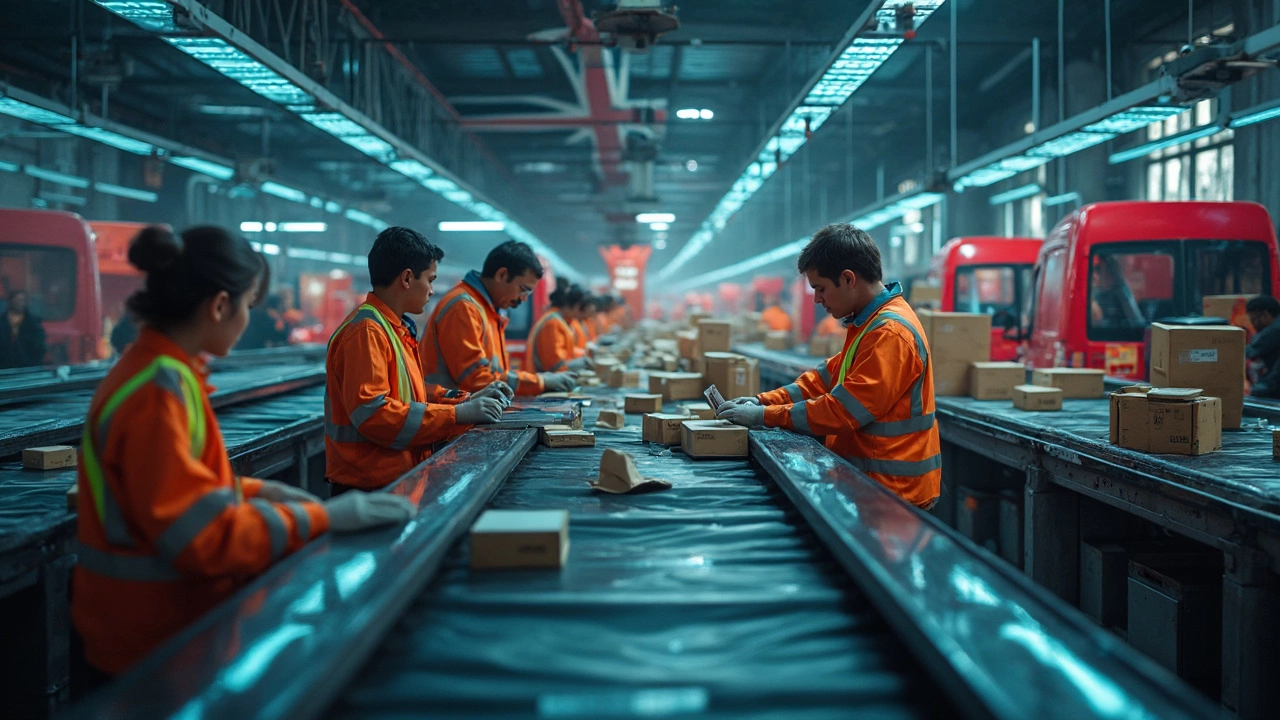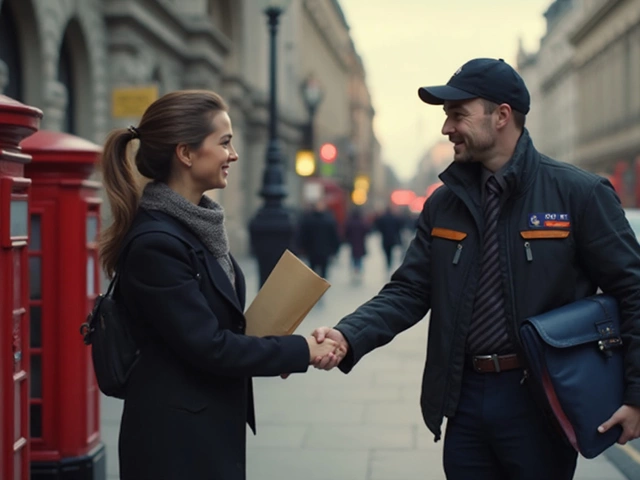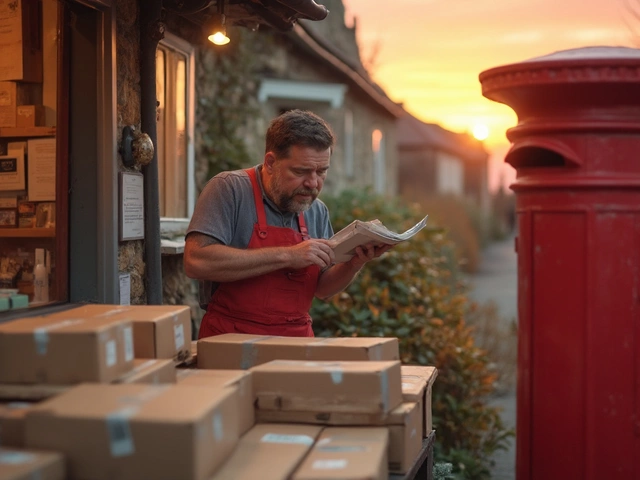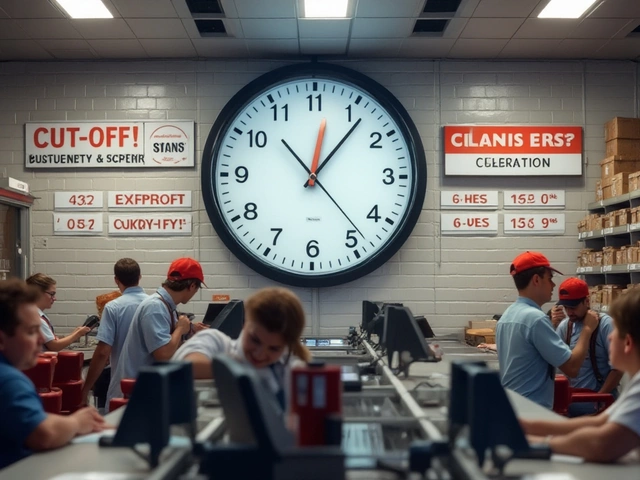Ever waited by the window for a package, tracking it every hour? You're not alone. Courier services are the invisible force behind almost every online order and important document delivery. But how do they get your stuff from A to B, and sometimes all the way to Z, so fast and so reliably?
Couriers aren’t just people with vans. They’re part of a network that includes drivers, dispatchers, customer support folks, and even some clever software, all working together. Their main job? Move packages and documents from sender to receiver, usually under tight deadlines—sometimes minutes, often just hours. And yes, it’s way more organized than your last attempt at spring cleaning.
If you’ve ever wondered why you need to sign for certain parcels or why some packages move faster than others, there's a good reason. Couriers sort shipments by urgency, destination, and sometimes by what the weather’s doing that day. Logistics planning isn’t just for big companies—it’s happening in every courier warehouse, every morning.
- What Does a Courier Actually Do?
- From Pickup to Drop-off: The Delivery Journey
- Tracking and Technology: Keeping Tabs on Your Stuff
- Tips for Smooth Deliveries (and Fewer Headaches)
What Does a Courier Actually Do?
The job of a courier isn’t just about picking up and handing over packages. It’s about making sure your delivery gets to the right place, on time, without getting damaged or lost. Instead of big trucks loaded with thousands of parcels, couriers typically handle fewer items at once, focusing on speed, security, and custom routes.
Every day, a courier wakes up early, checks their schedule, grabs all their assigned packages, and maps out the most efficient delivery route. Some couriers deliver on bikes or scooters in traffic-heavy cities, while others use vans or even walk for short distances. Their job is to adapt to whatever the environment throws at them—think city traffic jams, rainy weather, or tricky apartment buildings.
But there’s more going on than just driving or biking. Couriers scan each package at every stage to keep the tracking info updated. If you’ve ever followed a parcel going from “out for delivery” to “delivered,” that's because your courier was scanning it at every point. These scans update you and send notifications to the sender so everyone stays in the loop.
"Speed and accountability are what set courier services apart," says Emily Jacobs, Operations Lead at a major logistics company. "We’re not just moving boxes—we’re protecting people’s time and trust."
Most courier services offer same-day or next-day delivery. In fact, about 70% of big-city deliveries in the U.S. now happen within 24 hours, thanks to smart routing and local hubs. This isn’t just luck—many companies use apps to assign deliveries, track drivers with GPS, and let you see where your courier is in real time.
- Handle packages with care and verify addresses
- Keep customers updated with real-time tracking
- Double-check if a signature is needed for delivery
- Adapt to last-minute route changes or delivery instructions
Whether it’s medical samples, legal papers, or your online shopping spree, couriers make sure each item is delivered swiftly, safely, and with as little drama as possible. Their work is the backbone of delivery process reliability, especially when time is tight.
From Pickup to Drop-off: The Delivery Journey
The path a package takes with a courier service isn’t always as straightforward as you’d guess. It all kicks off with the pickup. Sometimes couriers head straight from a local hub to your door, especially with urgent deliveries. Other times, they swing by businesses or even warehouses, grabbing boxes by the armful as they go. Drivers usually get their routes mapped out daily—sometimes in real-time—thanks to smart route optimization tech that helps them dodge traffic jams and shave off minutes.
Once your package is on board, it’s quickly scanned into the system. Ever wondered why those barcodes matter? They let the courier and you keep tabs as your parcel hops from truck to sorting center or even onto a plane for longer distances. The average urban delivery, if you’re curious, takes under 24 hours door-to-door in most cities, and even faster for same-day delivery services.
Here’s what happens after pickup:
- Sorting: Packages land at local or regional hubs where they’re grouped by destination—imagine a giant puzzle that resets every night.
- Transport: From there, they might travel by truck, van, car, or sometimes e-bike—depends on how green or congested the city is.
- Re-sorting: At the destination hub, packages get another scan and a quick re-sort for local couriers who handle the last leg.
- Final delivery: Your designated driver receives the next batch and follows an optimized route to drop it off at your address. If a signature's needed, you sign on a handheld device. Some couriers offer photo proof if you’re out.
It sounds smooth, but there’s a lot going on behind the scenes. Couriers handle everything from apartment buzzers that don’t work to sudden downpours that slow things down. Fun fact: According to the International Post Corporation, the success rate for on-time urban package delivery in 2023 was over 96%. Missing a delivery window is actually rarer than you’d think.
If you’re sending something, double-check the labelling and pick-up times—it speeds things up and keeps everyone happy. For receivers, knowing your local courier’s typical schedule means you’re not playing hide-and-seek with your package all day.
Tracking and Technology: Keeping Tabs on Your Stuff
Ever notice how you can watch your package move from warehouse to doorstep almost in real time? That’s no accident—courier services survive on tracking systems and tech upgrades. Every package gets a unique barcode or QR code, and every scan along the way updates the status. Open your delivery app or check your email, and boom, you can see where your stuff is right now. You’re not the only one glued to the notifications: couriers and their supervisors use the same data to make sure nothing gets lost or delayed.
Big names in the delivery process game, like FedEx and UPS, started scanning packages back in the ’90s. Now, almost every courier company uses GPS tracking on their vans and real-time updates for both senders and receivers. If your driver goes off-route or gets stuck in traffic, dispatchers know instantly—and will find a detour faster than you can say “late delivery.”
Smartphones and handheld devices have sped things up even more. Drivers scan your package, capture digital signatures, and upload proof-of-delivery photos—all from the front seat of their van. One cool fact: some companies use AI to predict when a parcel will arrive, taking into account traffic, weather, and last-minute route changes.
| Tracking Feature | How It Helps |
|---|---|
| Real-Time GPS | Tells you & courier where the package is at any moment |
| Barcode Scanning | Updates status at every step, from pickup to drop-off |
| Delivery Notifications | Alerts you by SMS, email, or app when your stuff is close |
| Photo Confirmation | Proof of where a parcel was left, handy for missed deliveries |
According to a 2023 report by Statista, 85% of customers now expect real-time tracking for their deliveries. That's wild, considering how basic things used to be. As quoted by logistics expert Lisa Moore,
“Transparent tracking is now part of the deal. Customers want to know exactly when their package will land, not just the day.”
If you ever run into missing package drama, remember: all that package tracking data is logged. It’s easy for customer service teams to pull up the last scan and help you out way quicker than before. So yes, technology does more than send you endless alerts—it keeps your stuff moving, safe, and easy to find.
Tips for Smooth Deliveries (and Fewer Headaches)
If you ever had a parcel lost or waiting at some mysterious depot, you know the headache. Good news—there are easy ways to cut down delivery drama. When using courier services, a few smart moves can go a long way toward making sure your package lands safely and on time.
- Double-check the address: Tiny mistakes slow everything down. Add apartment numbers or gate codes if needed. Couriers rely on what you type, not what they can guess.
- Share your phone number: Most delivery process hang-ups happen because the courier can’t reach you. Enter a number you’ll actually answer, just in case.
- Pick the right shipping option: Some items just shouldn’t go with ‘standard’ when they’re super urgent or valuable. Same-day and express option costs might sting, but they’re fast and often have extra tracking.
- Use package tracking: Almost every package tracking system today gives live updates. Sign up for alerts instead of refreshing a page every five minutes. This way, you’ll know exactly when to expect your delivery.
- Label the package clearly: Peeling labels or bad handwriting make things harder for your courier. Stick on a fresh label, keep it visible, and tape it so it won’t come off in the rain.
- Special instructions help: Delivery notes like “leave at side door” or “don’t ring the bell” can make everything smoother. Couriers see these instructions in their app, and following them is part of their job.
Ever wondered how often packages actually go missing? In 2023, industry data showed that less than 1% of parcels handled by leading courier companies were lost or seriously delayed. The most common reason? Bad addresses or missing contact details—not rogue couriers.
| Common Delivery Problems | % of Cases (2023) |
|---|---|
| Incorrect Address | 42% |
| No Recipient Available | 35% |
| Damaged Package | 13% |
| Lost in Transit | 8% |
| Other | 2% |
Don’t be afraid to track and reach out. If your package status hasn’t changed in over 48 hours, ping the courier company’s customer support. They’re used to it and can usually nudge things along faster than just waiting it out.





